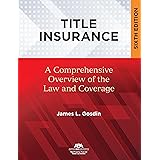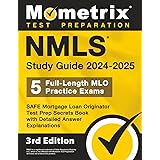Considering a dive into the dynamic world of real estate investing but unsure which path aligns with your financial aspirations? In the accompanying video, a seasoned investor meticulously dissects and ranks various real estate investing strategies, offering a candid perspective on their viability for wealth generation. While every strategy presents opportunities for substantial gains, understanding their inherent nuances, risks, and operational demands is paramount for sustained success.
This comprehensive guide complements the video’s insights, delving deeper into each real estate investment strategy, expanding on the intricacies, and providing additional context to inform your strategic decisions. We explore the tactical advantages and potential pitfalls of each approach, helping you navigate the complex terrain of property investment with greater clarity.
Deconstructing Real Estate Investing Strategies: A Detailed Analysis
The real estate landscape offers a diverse array of investment vehicles, each tailored to different risk appetites, capital commitments, and operational involvement. From rapid turnover projects to long-term wealth accumulation, selecting the optimal strategy is a critical first step. Let us explore the primary real estate investing strategies mentioned, offering an expanded view of their practical implications and market positioning.
Flipping Houses: The High-Stakes Renovation Game
House flipping, characterized by purchasing distressed properties, undertaking significant renovations, and then reselling for a profit, is often portrayed as a glamorous route to wealth. While the allure of substantial profits is real—with experienced flippers in affluent markets like the Bay Area reportedly earning over seven figures annually—this strategy is not without considerable risk.
The core challenge lies in the unpredictable nature of renovation. Initial assessments often fail to capture the full extent of necessary repairs, with hidden issues like foundational problems, outdated HVAC systems, or compromised drain lines frequently emerging once walls are opened. Such unforeseen expenses can rapidly inflate project costs, eroding profit margins. Furthermore, flippers typically rely on high-interest hard money loans, often with one-year terms. Delays in renovation or an inability to sell within this timeframe can lead to accrued interest, extension fees, or even foreclosure, turning a lucrative venture into a significant loss. Consequently, flipping operates akin to a sprint; every second counts, and missteps can be costly.
Wholesaling Real Estate: The Art of Contract Assignment
Wholesaling stands out as an accessible entry point into real estate investing, particularly for those with limited capital. This strategy involves identifying distressed properties, securing them under contract, and then assigning that contract to an end buyer (typically a flipper or landlord) for a fee. The primary advantage is minimal capital outlay; investors primarily invest time, effort, and marketing costs, often securing a contract with a nominal consideration of around $100.
However, wholesaling is intensely sales-driven, demanding persistent outreach through cold calling, door-knocking, and direct mail campaigns. The field is highly competitive, as its low barrier to entry attracts numerous aspiring investors. Crucially, wholesalers do not acquire assets, missing out on long-term appreciation and significant tax benefits associated with property ownership. Earnings from wholesaling are also taxed at ordinary income rates, which are typically higher than capital gains rates. Therefore, while offering rapid cash flow, wholesaling functions more as a business operation than a traditional investment for asset accumulation.
Investing in Land: Undeveloped Potential or Untapped Liability?
Land acquisition, involving the purchase of undeveloped plots for resale to developers, presents a unique proposition. The primary draw is the potential to acquire land at a significant discount, often from owners burdened by property taxes on inherited, unused parcels. These “pennies on the dollar” acquisitions can then be sold for considerable profit when a developer envisions a strategic use.
Despite its potential, land investing occupies a lower tier for many due to distinct challenges. Financing raw land is often difficult, necessitating substantial cash investment. Moreover, holding undeveloped land generates no rental income and accrues ongoing property tax liabilities, effectively creating a negative cash flow. Unlike improved properties, land typically appreciates slower unless a specific development catalyst emerges. For many investors, it represents an illiquid asset with limited income-generating capacity, more akin to holding an unmined resource than a productive asset.
Buy and Hold: The Enduring Power of Long-Term Ownership
The buy and hold strategy, centered on acquiring rental properties (typically one-to-four units) for long-term ownership, is lauded as a quintessential wealth generator. This approach leverages passive income through rents, property appreciation over time, and a suite of advantageous tax benefits. The financing terms for these smaller residential properties are exceptionally favorable, often involving 30-year fixed-rate mortgages. This predictability locks in a major expense, shielding investors from interest rate volatility over decades.
The strength of buy and hold lies in its compounding effect. As property values and rents naturally increase, equity grows, and the debt diminishes, leading to substantial wealth accumulation. Unlike active strategies like flipping or wholesaling, which demand continuous engagement, buy and hold cultivates true passive income, freeing investors from the relentless pursuit of the next deal. It’s a strategy that builds a financial fortress brick by brick, providing consistent returns and a stable foundation for financial independence.
Short-Term Rentals: Enhanced Cash Flow, Elevated Management
Short-term rentals (STRs), typically managed through platforms like Airbnb or Vrbo, offer the tantalizing prospect of significantly higher gross income—often two to three times that of traditional long-term rentals. This enhanced cash flow stems from nightly rates, allowing properties to generate more revenue over shorter periods, particularly in desirable locations. Moreover, STRs still afford asset ownership, combining high-income potential with the long-term benefits of property appreciation and tax advantages.
However, this strategy is notoriously service-intensive. The frequent guest turnover necessitates constant cleaning, maintenance, and responsive communication, effectively operating as a hospitality business. Income consistency can fluctuate dramatically with seasonality and occupancy rates, leading to periods of vacancy. Increased wear and tear from transient guests also mandates higher renovation and repair budgets. Furthermore, the regulatory landscape for STRs is increasingly complex, with a growing number of cities imposing strict ordinances or outright bans, mirroring the challenges faced by ride-sharing platforms in their early days. Investors must navigate a dynamic regulatory environment, making the operational demands higher than for traditional rentals.
Syndication: Passive Capital for Large-Scale Projects
Real estate syndication allows investors to pool capital to acquire larger properties, typically multi-family or commercial assets, managed by an experienced “operator.” As limited partners, investors typically contribute a minimum of $50,000 and receive a preferred return, perhaps 8%, along with a share of profits via a “waterfall structure.” This offers tax benefits and a degree of passive involvement for high-net-worth individuals lacking the time or expertise for active management.
Nevertheless, syndication comes with distinct drawbacks. The primary concern is operator risk; investors relinquish control, placing complete trust in the syndicator’s competence and integrity. A mismanaged project, even one with a strong financial prospectus, can lead to substantial losses for limited partners who have no direct influence over operational decisions. While offering passive returns, the limited upside (capped preferred return) and the inherent dependence on an external party make it less attractive for those seeking more direct control or higher growth potential from their capital.
Multi-Family Investing: Scaling Up Rental Portfolios
Multi-family investing involves the direct purchase and management of apartment buildings, ranging from duplexes to large complexes. This strategy is highly attractive for its ability to scale rental income and leverage the same tax benefits as single-family buy and hold. Owning multiple units under one roof streamlines property management and tenant acquisition, offering economies of scale.
Despite its appeal, multi-family investment presents significant financing hurdles compared to smaller residential properties. As commercial assets, they typically require a higher down payment—often 35% compared to the 20% for one-to-four-unit residential loans. Commercial loans also feature shorter amortization periods (20-25 years) and shorter loan terms (often 5 years), necessitating frequent refinancing. This subjects investors to interest rate fluctuations, as evidenced by the dramatic rate increases between 2019 and 2024. A refinancing event during a high-interest rate environment can significantly elevate mortgage payments, potentially jeopardizing cash flow and property value. Thus, while offering substantial growth, the financing structure introduces a layer of complexity and market sensitivity.
Lending (Private Money Lending): The Investor as the Bank
Private money lending positions an investor as the bank, providing capital to other real estate investors—such as flippers or buy-and-hold operators—in exchange for a promissory note secured by real estate. This strategy offers a passive income stream through interest payments, typically yielding 8-12% returns. It appeals to those who prefer a hands-off approach and a fixed income stream without the operational demands of property ownership.
However, like syndication, private lending carries significant counterparty risk. The lender’s return is entirely dependent on the borrower’s ability to execute their project and repay the loan. While secured by collateral, the limited upside—a fixed interest rate that caps potential returns—can be a deterrent. Lenders also forgo the substantial tax benefits and asset appreciation inherent in direct property ownership. For investors with substantial capital, this can be a component of a diversified portfolio, but for many, the trade-off of limited returns for elevated risk, without the benefits of asset ownership, makes it a less compelling primary strategy.
Commercial Real Estate: Large-Scale, Specialized Assets
Commercial real estate encompasses properties like office buildings, warehouses, and strip malls, representing large-scale, often specialized assets. While offering potential for significant returns, this sector has faced substantial headwinds, particularly post-COVID-19. Shifting work patterns and changes in retail consumption have led to increased vacancies and declining valuations in many commercial segments, making it a challenging market for new entrants.
Financially, commercial real estate shares similar rigorous requirements to multi-family properties: high down payments (35%), shorter amortization, and frequent refinancing cycles (every five years). The capital requirements are substantial, often placing these investments out of reach for most individual investors. The returns, while potentially large in absolute terms, may not always be “super amazing” relative to the capital and risk involved. For a majority, especially outside the high-net-worth segment, the current market climate and inherent complexities make commercial real estate a less attractive proposition at this juncture.
Subject To: Creative Acquisition, Cash-Heavy Catch
“Subject to” investing involves acquiring a property by taking over the seller’s existing mortgage, often at a favorable interest rate secured years ago. For instance, purchasing a $500,000 property with an existing $200,000 mortgage at 3% allows the buyer to assume that low-interest debt. This creative financing mechanism can appear highly appealing, especially in high-interest rate environments.
However, the catch lies in the equity gap. If the existing loan is only $200,000, the buyer must provide the remaining $300,000 in cash to cover the difference from the purchase price. The core challenge for most investors is not accessing a low-interest loan, but rather accumulating the substantial cash needed for the down payment and equity gap. Therefore, while “subject to” can be a powerful tool when structured correctly—ideally with a high existing loan-to-value ratio and a seller motivated to accept a lower cash payout—its practical application is often limited by the significant cash required. It’s a strategy that shines in specific, rare scenarios, not as a consistently reliable acquisition method.
The BRRRR Method: A Strategic Combination
The BRRRR method—Buy, Renovate, Rent, Refinance, Repeat—is a sophisticated, cyclical strategy that integrates elements of flipping and buy and hold. It involves acquiring a distressed property at a low price, renovating it to force appreciation, renting it out, and then refinancing to extract the initial capital (or more) to repeat the process. This strategy, when executed flawlessly, can create “infinite returns” by allowing investors to continually redeploy their capital into new properties while retaining ownership of cash-flowing assets.
While an undeniably powerful approach, the BRRRR method is sensitive to market conditions. High interest rates, such as those seen recently, can significantly impact the refinance stage, making it challenging to pull out sufficient equity at favorable terms while maintaining positive cash flow. Each refinance transaction also incurs closing costs, typically $5,000-$10,000, which must be factored into the deal’s profitability. Although a stellar strategy in concept, the current economic climate demands meticulous underwriting and an awareness of the financial friction introduced by refinancing. It embodies a hybrid approach, demanding both the execution prowess of a flipper and the long-term vision of a landlord.









